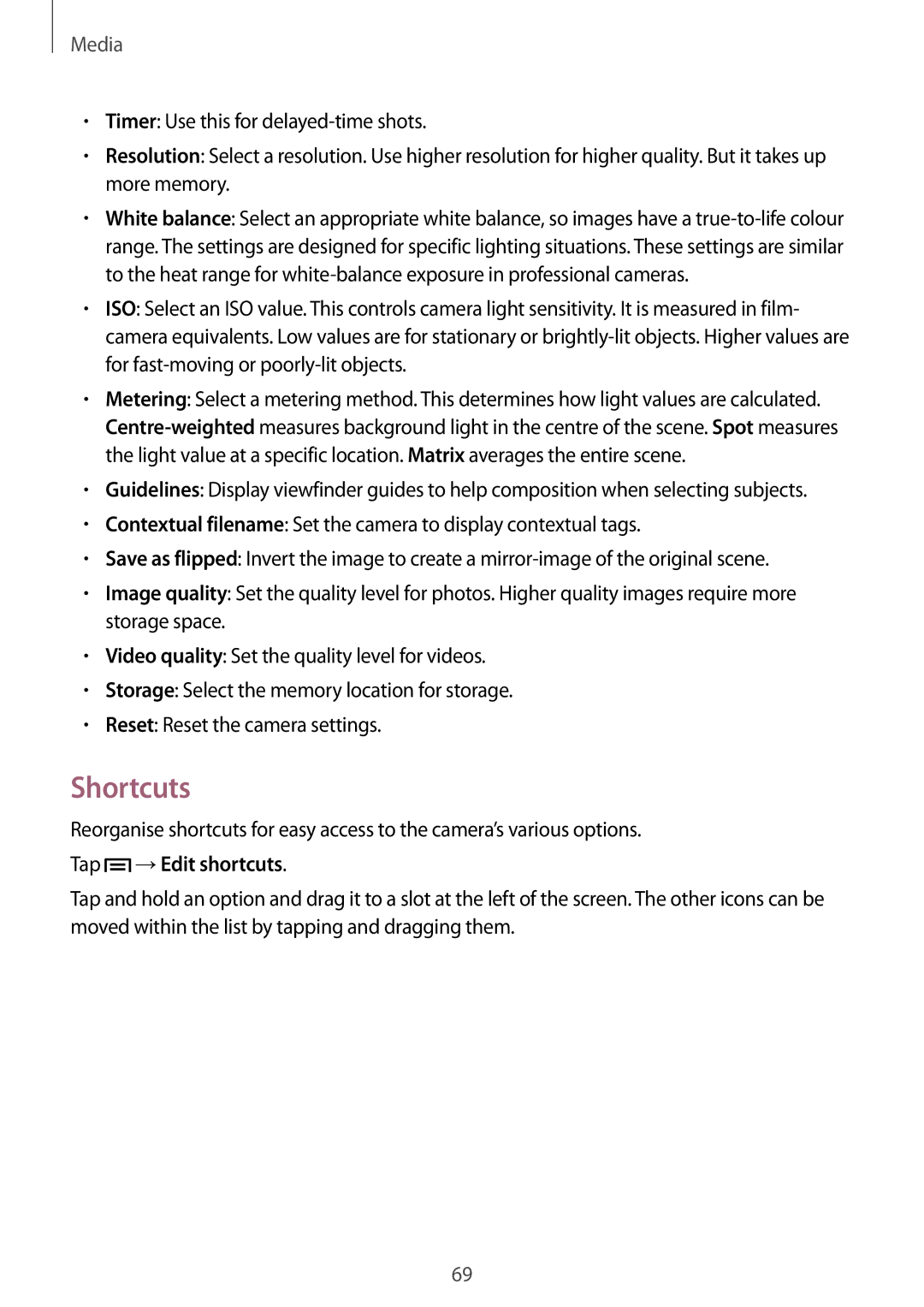Media
•Timer: Use this for
•Resolution: Select a resolution. Use higher resolution for higher quality. But it takes up more memory.
•White balance: Select an appropriate white balance, so images have a
•ISO: Select an ISO value. This controls camera light sensitivity. It is measured in film- camera equivalents. Low values are for stationary or
•Metering: Select a metering method. This determines how light values are calculated.
•Guidelines: Display viewfinder guides to help composition when selecting subjects.
•Contextual filename: Set the camera to display contextual tags.
•Save as flipped: Invert the image to create a
•Image quality: Set the quality level for photos. Higher quality images require more storage space.
•Video quality: Set the quality level for videos.
•Storage: Select the memory location for storage.
•Reset: Reset the camera settings.
Shortcuts
Reorganise shortcuts for easy access to the camera’s various options.
Tap  →Edit shortcuts.
→Edit shortcuts.
Tap and hold an option and drag it to a slot at the left of the screen. The other icons can be moved within the list by tapping and dragging them.
69
